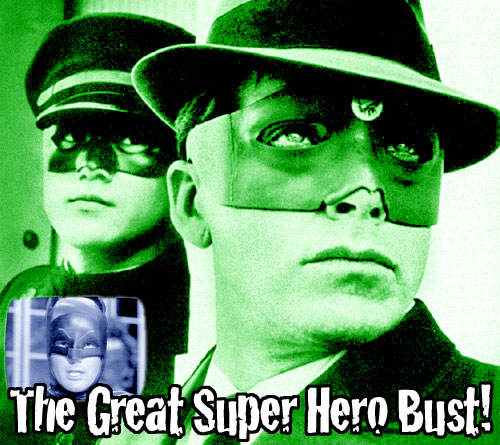
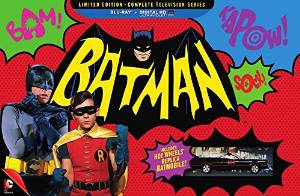
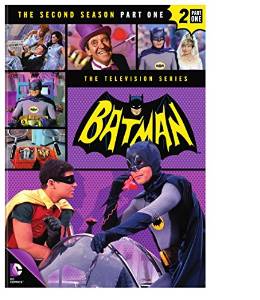
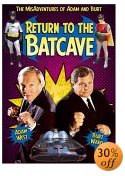
Batman on DVD
Super Friends DVD
Smallville
 |
|
 |
 |
 |
|
| Superman
on DVD Batman on DVD |
The
Flash on DVD Super Friends DVD |
Superman Smallville |
|||
Batman, see, that was the problem. That comic book line ceased making a profit some years earlier, Batman and Detective Comics (where the character debuted in 1939) were going to get canned after a quarter century on the stands. As a last-ditch effort, the books were assigned to the editor of DC’s science fiction line, Julius Schwartz. His mission - move Batman into profitability within six months or else. The team he assembled did the trick, turning the Caped Crusader into more of a high-tech sleuth and less of a costumed clown. Colorful villains like Catwoman and The Joker were resurrected and given new life in stories by John Broome and Gardner Fox, illustrated by Carmine Infantino and various artists under the “Bob Kane” byline.
Unfortunately, the audience unexpectedly deserted Shindig! after that first season leaving two gaping holes in ABC’s already desolate schedule. In an act of sheer desperation, they rushed one of their most promising shows forward for a midseason debut. This was a risky move because, while there had been other shows that premiered in the winter, they were never terribly successful. None of them. Ever.
Together with screenwriter Lorenzo Semple, Jr., executive producer William Dozier crafted a show that could be enjoyed by adults as well as kids. Batman debuted on January 12, 1966. Within the first few weeks, the telecast was attracting fifty-five percent of the viewing audience, with a surprising two-thirds over the age of eighteen.
William Dozier bragged to a reporter, "Gloria Swanson, I remember, called me from New York, but we couldn’t find the right part for her. Everybody came out of the woodwork; we never had to go after those people. A lot of them I had known personally, and they would call and say that they would love to do one of those because 'my kids want me to do it.' "Up to twelve years old, they take Batman seriously. From thirteen on, we've got them chuckling in their beer." Indeed, Dozier (who was also the show's announcer) instinctively knew this pop-art froth had a short shelf life, just how short? Network rivals were betting Batman was another hula hoop craze. "They gave it only ninety days. I gave it two years." At the end of just six months, Bat-mania was in full flower. $75,000,000 worth of Batman books, capes, toys, coloring books, bubble gum cards, and weaponry had been sold, with Batman's face plastered on every conceivable product whether it had any relevant practicality or not. Never before had the world been bombarded by such a ridiculous assault of loosely branded products. Batman candy. Batman bicycles. Batman lunch boxes. Batman bath soap. Batman race cars. Batman lamps. Batman every-damn-thing-you-can-think-of!
Batman changed the course of television in a profound way by proving that a program could debut midseason and still be a hit. From 1966 forward, all three networks began seriously programming a second season. "Batman will fade, of course," Dozier correctly predicted in the Saturday Evening Post, at the height of the show's popularity. "We won't keep all the adults we have now. We have to think ahead." Dozier was right to be concerned about audience erosion, he reasoned that adults would soon defect once the novelty wore off. By the fall of '66, Batman was the number-one show in the nation but adult ratings had dropped to half what they once were. Not surprisingly, ABC was more than willing to give the producer another slot on their fall schedule, Batman was the biggest hit in the network's history. To recapture lost adult viewers, Dozier decided to try the super-hero genre without playing it for laughs. To achieve this, he revived one of the most successful super-heroes from the radio era - The Green Hornet.
|
DC
Comics on DVD here!
DID YOU KNOW: There were three actresses that played Catwoman. Julie Newmar was Catwoman in seasons 1 & 2. Lee Meriwether was seen in the film and then Eartha Kitt assumed the role for the final season of Batman. In the first two episodes, Batman and Robin battled the Riddler (Frank Gorshin). Next up was Burgess Meredith as The Penquin. There was a Batmobile, Batcopter, Batboat and two Batcycles (Batgirl had one) seen on the TV show. Film legend Tallulah Bankhead was cast as The Black Widow in 1967. It was her last TV appearance, she died the next year. Shelly Winters battled the Dynamic Duo as Ma Parker in 1966. In 1966, The Marketts' hit #17 on the pop charts with the theme song from Batman. The far superior version by Neal Hefti and his Orchestra made it to #35. In 1967, Adam West cut a single called Miranda. REGULAR CAST: Adam West .. Bruce Wayne / Batman Burt Ward .. Dick Grayson / Robin Alan Napier .. Alfred Neil Hamilton .. Commissioner James Gordon Stafford Repp .. Police Chief O'Hara Madge Blake .. Aunt Harriet Cooper (1966-67) Yvonne Craig .. Barbara Gordon / Batgirl (1967-68)
Why it took so long for the Batman series to arrive on DVD - this is a story from the AP wire service in 2006:  Read
more about The Green Hornet TV show here Read
more about The Green Hornet TV show here
TV
Guide's Batman Page, Batman TV Special on DVD! Hard-to-find
Classic TV TV
on DVD/
/Holiday
Specials on DVD
|
|
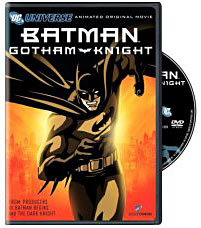 |
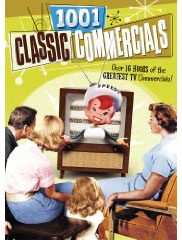 |
 |
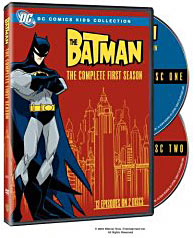 |
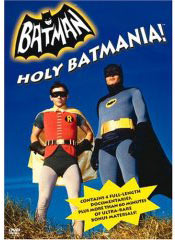 |
|
|
||||||||||||||